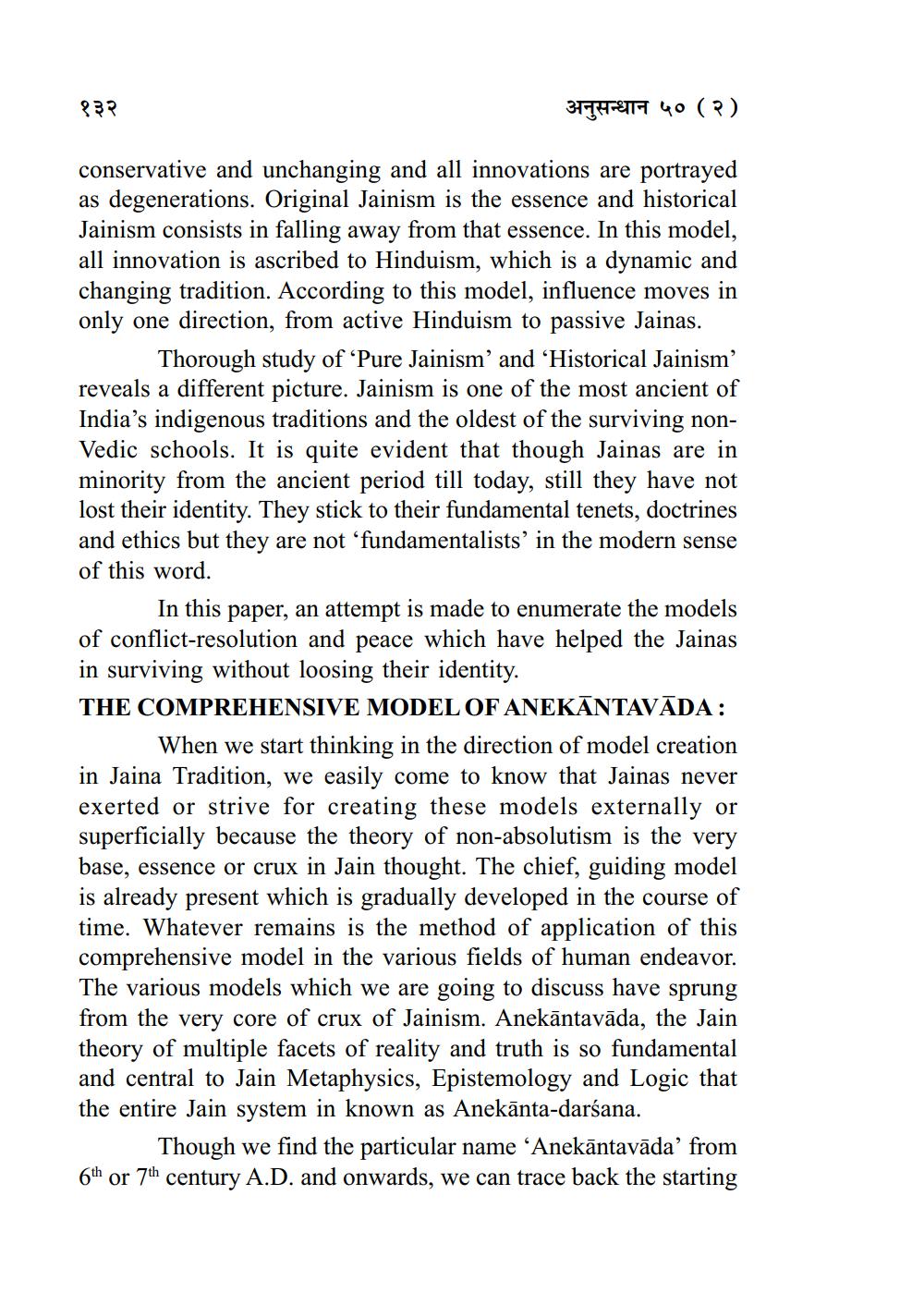Book Title: Models of Conflict Resolution and Peace in Jain Tradition Author(s): Nalini Joshi Publisher: ZZ_Anusandhan View full book textPage 2
________________ १३२ 373HET 40 (?) conservative and unchanging and all innovations are portrayed as degenerations. Original Jainism is the essence and historical Jainism consists in falling away from that essence. In this model, all innovation is ascribed to Hinduism, which is a dynamic and changing tradition. According to this model, influence moves in only one direction, from active Hinduism to passive Jainas. Thorough study of Pure Jainism' and 'Historical Jainism' reveals a different picture. Jainism is one of the most ancient of India's indigenous traditions and the oldest of the surviving nonVedic schools. It is quite evident that though Jainas are in minority from the ancient period till today, still they have not lost their identity. They stick to their fundamental tenets, doctrines and ethics but they are not ‘fundamentalists' in the modern sense of this word. In this paper, an attempt is made to enumerate the models of conflict-resolution and peace which have helped the Jainas in surviving without loosing their identity. THE COMPREHENSIVE MODEL OF ANEKĀNTAVĀDA: When we start thinking in the direction of model creation in Jaina Tradition, we easily come to know that Jainas never exerted or strive for creating these models externally or superficially because the theory of non-absolutism is the very base, essence or crux in Jain thought. The chief, guiding model is already present which is gradually developed in the course of time. Whatever remains is the method of application of this comprehensive model in the various fields of human endeavor. The various models which we are going to discuss have sprung from the very core of crux of Jainism. Anekāntavāda, the Jain theory of multiple facets of reality and truth is so fundamental and central to Jain Metaphysics, Epistemology and Logic that the entire Jain system in known as Anekānta-darśana. Though we find the particular name ‘Anekāntavāda' from 6th or 7th century A.D. and onwards, we can trace back the startingPage Navigation
1 2 3 4 5 6 7 8 9 10 11 12 13
